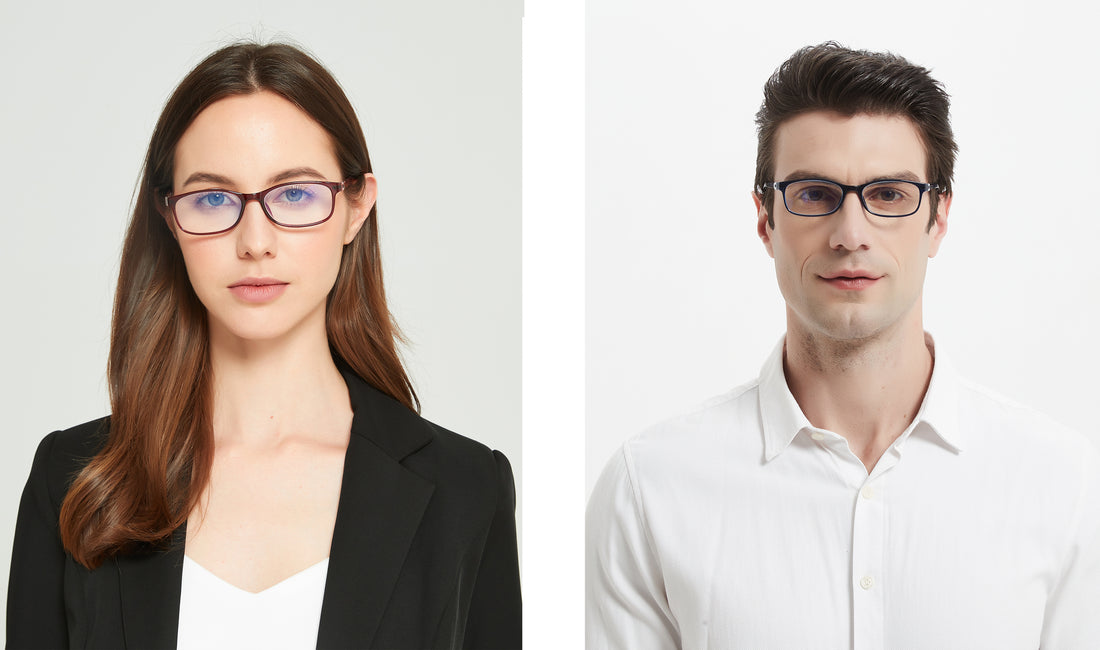
How to Choose Eyeglasses for Vision Correction
Share
What type of eyeglasses do I need?
There are two main types of eyeglasses. Single-vision glasses have an all-purpose lens designed to help you see either close up or far away. Multifocal glasses correct both near and distance vision — all in the same lens. One portion is focused for distance vision, while the other portion is used for up close activities such as reading.
Single-vision lenses are worn by people with various types of focusing problems.
- They are sometimes prescribed for children or adults who have trouble seeing far-away objects, a condition known as myopia. They can also be prescribed for people who have a condition called hyperopia, meaning they have trouble seeing close and sometimes far away as well.
- These lenses also take the form of reading glasses for people who have good distance vision but experience a loss of near vision with age, known as presbyopia. So-called "readers" can be purchased over the counter at drugstores, bookstores and other retail shops. You can also get a prescription for reading glasses from your eye care provider. Some people worry that reading glasses might cause their sight to deteriorate more quickly with age. That's not the case! No exercise or medication can reverse presbyopia. Delaying the use of reading glasses is of no benefit. You will probably need to change your eyeglass prescription from time to time between the ages of 40 and 60 because your eye's natural lens will continue to lose flexibility and, therefore, focusing ability.
Multifocal lenses are commonly used to correct distance vision along with presbyopia.
Bifocal lenses have a correction on the bottom half for reading and a different correction on the top half for seeing at a distance. Some specialized lenses also have segments at the top for glancing up at objects in the intermediate or near range. These are called double-D bifocals.
Trifocals are lenses with three different lens corrections — distance vision, intermediate vision and near vision — in one pair of eyeglasses.
Progressive lenses function generally the same way as bifocals or trifocals, but they have a smooth transition instead of visible dividing lines between distance and near focal areas. While the invisible transition of progressive lenses may be more aesthetically pleasing, the focal areas are relatively small because more lens space is used for the transitional areas. Progressive lenses can cause more distortion than other types of lenses, making them difficult to wear for approximately 10% of the population.
Computer glasses have multifocal lenses with a correction specifically designed for focusing on computer screens, which are usually positioned about 20 to 26 inches away from the face. These glasses help avoid eye strain and allow office workers to easily switch their focus between conference room whiteboards, printed pages and computer screens.
Lens materials make a big difference
- Eyeglass lenses used to be made only of glass, but today most lenses are plastic.
- Plastic lenses are lighter, more flexible and safer than glass lenses because they are less likely to shatter. They also have inherent UV light-blocking ability.
- Doctors often recommend polycarbonate lenses for people who need eyeglasses during sports or other activities that can result in eye injuries. Polycarbonate is highly impact resistant.
- Trivex is a newer plastic material that meets the same safety standards as polycarbonate, but it is less distorting.
A thin, lightweight, plastic lens called a "high index" lens is another option. These are recommended for people who need high visual correction. Because they have a thin profile, they can reduce the "coke bottle" appearance that often comes with thick-lens glasses.
Protective coatings
Protective coatings for eyeglasses are available to help you keep your eyes healthy.
Anti-reflective coatings reduce glare. This makes for easier eye contact, prevents eyestrain and improves your appearance. Coated lenses also allow more light to pass through. This improves your ability to see small patterns and letters. These coatings are especially helpful for people bothered by the glare of headlights and other lights while driving at night.
An ultraviolet (UV) coating helps to protect your eyes from the sun's harmful radiation. This type of coating may not be needed on some types of plastic lenses because they inherently block UV light.
Prescription sunglasses also offer UV protection. People who prefer one set of eyeglasses for both inside and outdoors may benefit from photochromatic lenses. These lenses automatically adjust based on light exposure, with a darker tint in sunlight and a lighter tint indoors. A disadvantage is that photochromatic lenses do not work well in cars or airplanes, because the windows block the light rays that trigger the change in lens tint. In some environments, it may take several minutes for the lens tint to change from dark to light.
Price: More Isn’t Necessarily Better